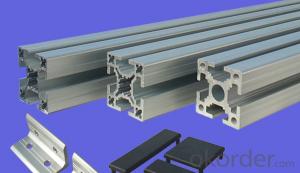Aluminum foil is a staple in many households and commercial kitchens, known for its versatility and convenience. But what happens to it after we’re done using it? The environmental impact of recycled aluminum foil is a topic that deserves our attention, as it can help us make more informed decisions about waste management and sustainability.
The Journey of Aluminum Foil
Aluminum foil starts its life as bauxite ore, which is then processed and refined into aluminum. This metal is lightweight, durable, and has excellent thermal conductivity, making it perfect for food packaging, insulation, and even aerospace applications. However, the production process is energy-intensive and contributes to greenhouse gas emissions.
A Second Life for Aluminum Foil
Once we’ve finished using aluminum foil, it doesn’t have to end up in a landfill. Recycling aluminum foil not only saves energy but also reduces the demand for raw materials. The recycling process requires only 5% of the energy needed to produce new aluminum from bauxite. That’s a significant saving!
The Challenges of Recycling Aluminum Foil
Despite the benefits, recycling aluminum foil comes with its own set of challenges. Contamination from food residues and other materials can make the recycling process more difficult. Additionally, the lightweight and small size of aluminum foil pieces can make them easily overlooked in recycling efforts.
The Role of Consumers and Manufacturers
Consumers play a crucial role in the recycling process. Properly cleaning and sorting aluminum foil before recycling can help improve the efficiency of the process. Manufacturers also have a part to play by designing products that are easier to recycle and by promoting recycling initiatives.
The Impact on Climate Change
Recycling aluminum foil contributes to the fight against climate change by reducing the need for new aluminum production. This, in turn, lowers the overall carbon footprint associated with aluminum use.
The Economic Benefits of Recycling Aluminum Foil
Not only is recycling aluminum foil good for the environment, but it also has economic benefits. The recycled aluminum industry creates jobs and contributes to the economy. It’s a win-win situation for both the environment and the economy.
The Future of Aluminum Foil Recycling
As we move towards a more sustainable future, the importance of recycling aluminum foil will only grow. Innovations in recycling technology and increased awareness among consumers and manufacturers will play a key role in improving the recycling rates of aluminum foil.
Conclusion
The environmental impact of recycled aluminum foil is a multifaceted issue that involves energy savings, reduced greenhouse gas emissions, and economic benefits. By understanding the process and challenges of recycling, we can all contribute to a more sustainable future. Let’s not let our used aluminum foil go to waste but give it a second life through recycling.

